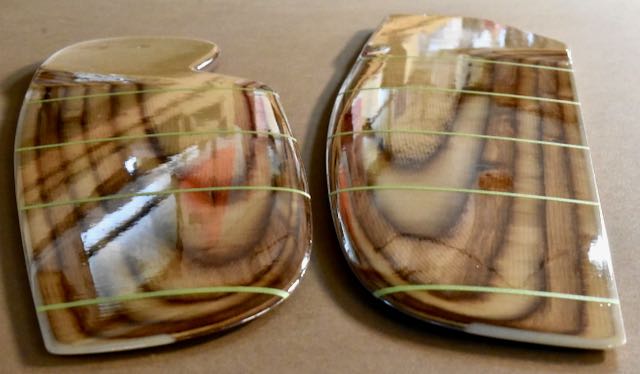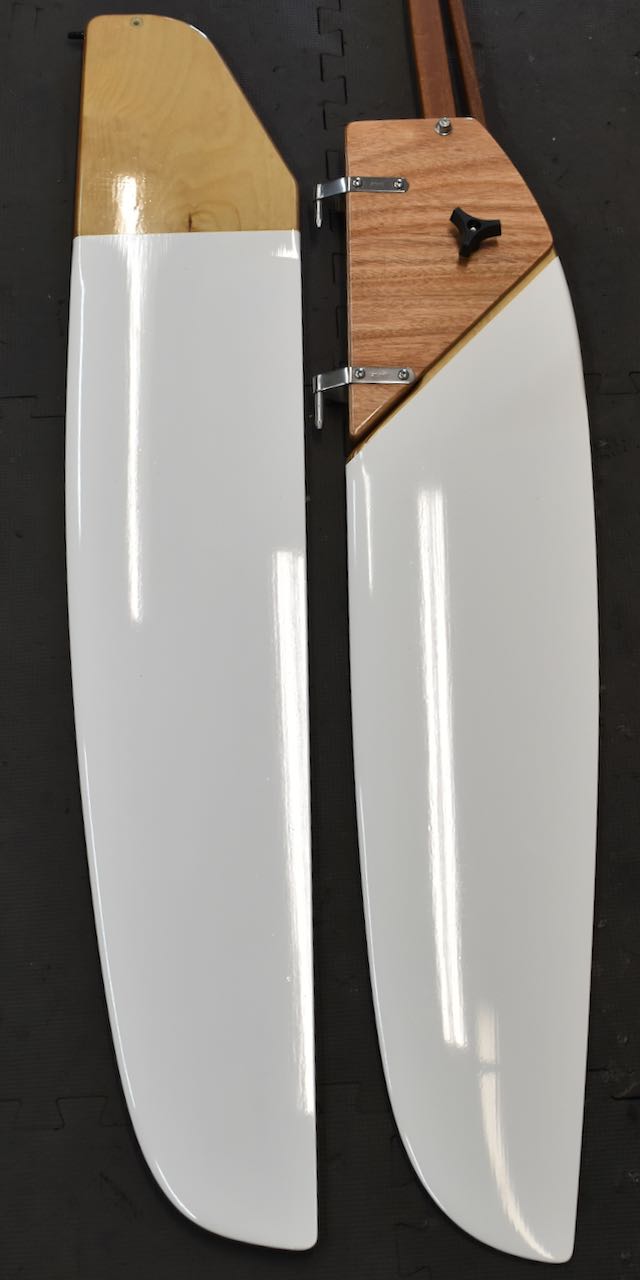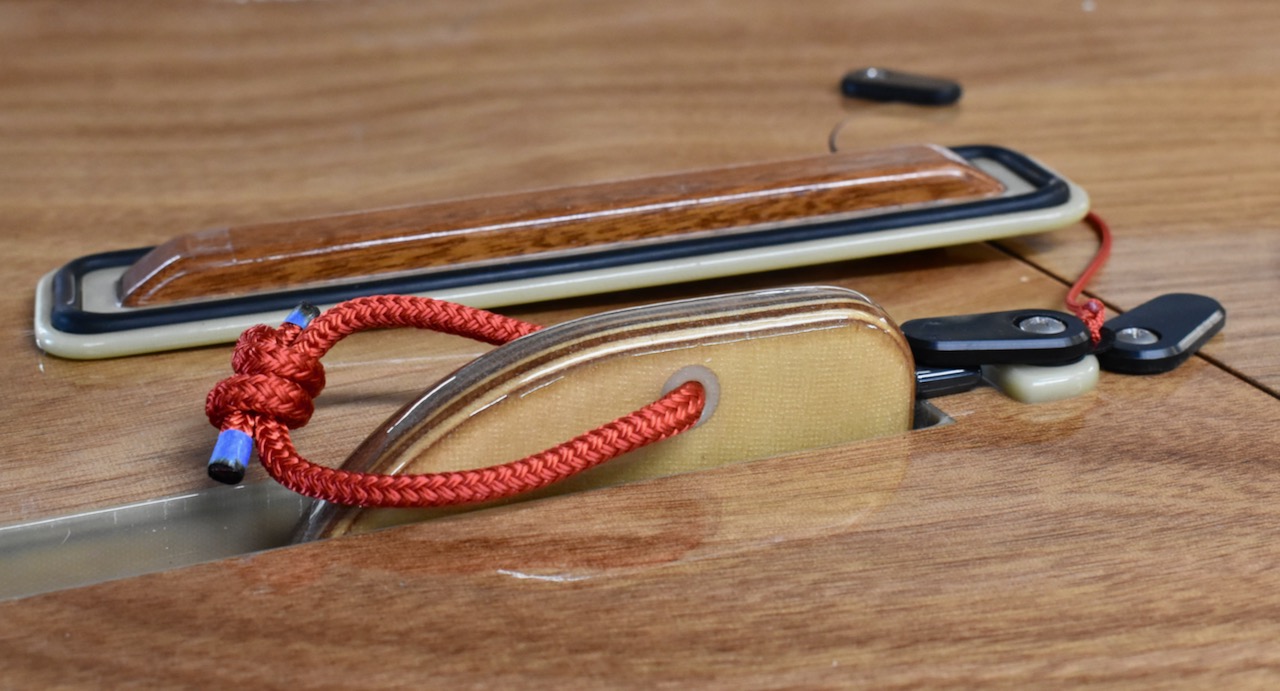(Updated)
We took the sailing option very seriously for the PT 11 and it's a good thing we did. Most of the PT 11 builders have chosen our rig and foils. The sailing performance of this boat is not only measured in sailing ability, but also in simplicity and ease of setting up the rig. Setting up and breaking down a sailing rig is always a bit of work, especially if you are doing it alongside a cruising boat. It's true that the easier the set-up, the more one goes sailing. Our rig is as light and easy to use as possible. The carbon fiber mast is two-piece and sleeves together. The boom carries all of the hardware and running rigging. The gooseneck fitting is made by us. It has no moving parts, installs instantly, and is held to the mast by the sail and vang. High quality snap and "S" hooks make set-up significantly faster.
The sail is small (54 sq. ft.), but it's a powerhouse, thanks to a good sail designer, Sandy Goodall. The sails are made from DK 160 Challenge.(TM)
The PT 11 sailing rig is sold complete and ready to use.
The rig comes in its own bag shipped in an 8ft long x 7" x 7" box.
 In the 94" bag: carbon mast, boom, running rigging, and 54 ft sq sail. All this weighs barely 11 pounds! Assembled, the mast is 15' 1" tall with a 10" bury. (socket on the PT 11 and Spear dinghies.
In the 94" bag: carbon mast, boom, running rigging, and 54 ft sq sail. All this weighs barely 11 pounds! Assembled, the mast is 15' 1" tall with a 10" bury. (socket on the PT 11 and Spear dinghies.
 Out haul and main sheet tackle.
Out haul and main sheet tackle.
Line colors change with various batches.
 Below: Gooseneck and vang The red part is the sleeve on the sail.
Below: Gooseneck and vang The red part is the sleeve on the sail.
 The gooseneck left was our original design that turned out to be quite labor intensive.
The gooseneck left was our original design that turned out to be quite labor intensive.
We have since developed a machined Delrin gooseneck, (below) glued into the boom rather than riveted and that has been working great. 
 Earlier model above with an S-hook, currently below with a snap-hook.
Earlier model above with an S-hook, currently below with a snap-hook.

Having fun!
 UPDATED INFORMATION:
UPDATED INFORMATION:
Complete rig: includes a 2-part carbon mast + boom, all associated hardware and running rigging, sail and bag. It is extremely lightweight (barely 11 Lbs) and quick to set up.
Our Spar tubes are custom made in the USA + Harken, Ronstan, & Allen Hardware)
The masts and booms are made in state by ICE, a maker of the highest quality carbon fiber tubes on the planet. The two-part mast and boom (almost 23 lineal feet of tapered custom carbon tubes) weigh just 6.7 lbs and that includes all the hardware and running rigging on the boom (5 blocks, 2 snap hooks, 1 s-hook, 7 eye straps, 1 cleat, 37 feet of running rigging, and a custom gooseneck fitting.
Pricing on the CLC website
We have minimal notes for builders to create their own sailing rig as an alternative, starting with 2 standard diameter 460 windsurfer masts.
About the PT Eleven sail :
A foil shaped, luff sleeved sail with 2 short battens, app 54ftsq. (DK160) Challenge(TM) sail cloth is made in the USA. This type of sail does not reef and we have not missed such a feature. It is a single, relatively small sail well shaped for a variety of conditions. There is no jib or spinnaker.
PT 11 Sails are designed by Sandy Goodall and prototyped by Sean Rankins of NW Sails & Canvas. Production modifications by Bob Pattison of Sails International. *Production by Neil Pryde/Sails International.
Read Sandy’s Review of Sailing the PT 11.
Notes on the design; Look for ‘REEFING THE SAIL?’
In dinghy sailing events placed in the same class as Lasers, we found the PT 11 to be competitive upwind as the foils and sail allow for pointing very high. However; The PT 11 is not designed as a racing dinghy, but it is a very fun boat to sail. AEB







































